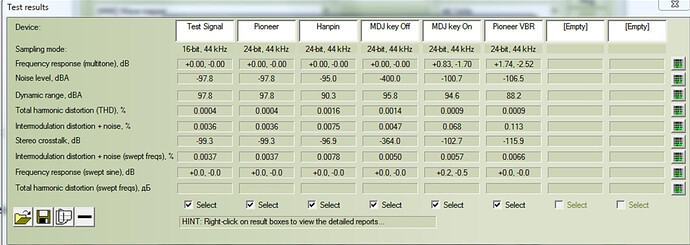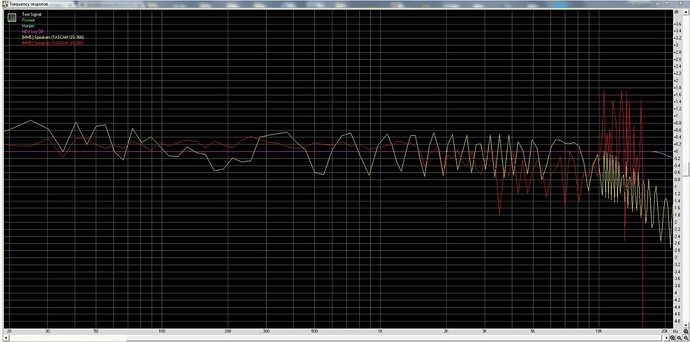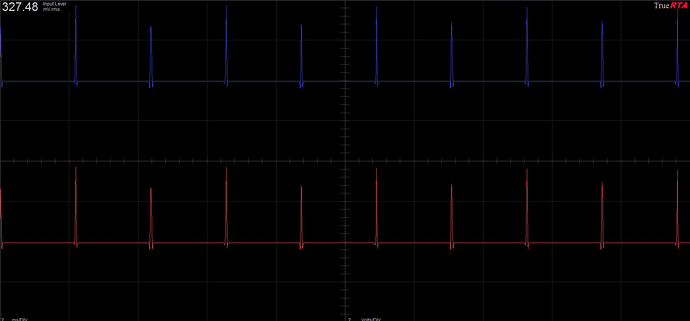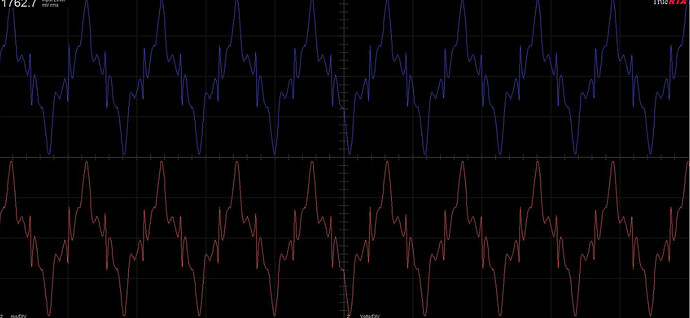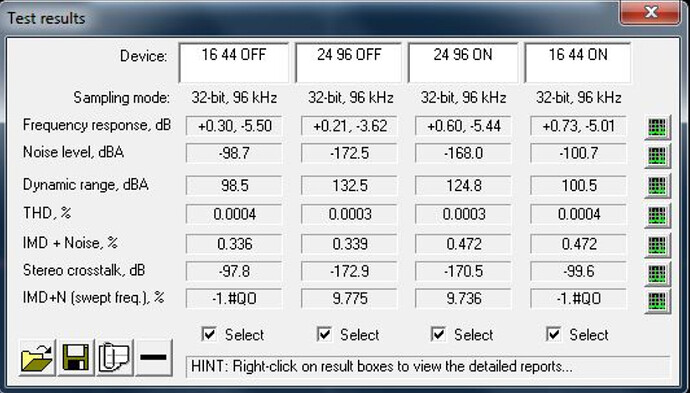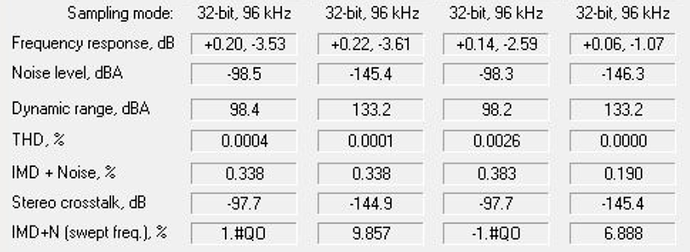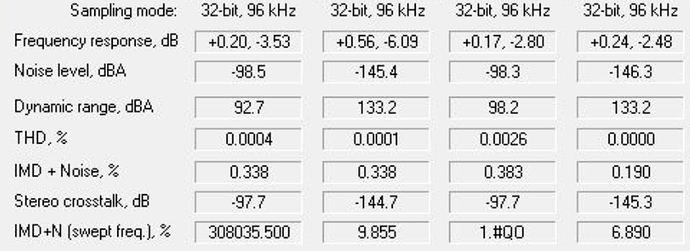An evaluation of the state of the industry other than Denon Prime. I ran some RMAA tests of the Hanpins, Pioneer CDJ-900, and Gemini MDJ-1000 playing off a flash drive. All done using SPDIF out.
For MP3s, 320 was a significant but not alarming reduction in specs for all three brands… I don’t believe that’s shown, but take my word for it. VBR was substantially worse (red line with wild high frequency swings), and they pretty much decoded MP3s of varying types similarly as far as their own respective fidelity – i.e. their traces looked similar and their respective numeric results were different mostly with respect to the same differences seen in the wav performance. In other words, none of the brands decoded MP3s substantially different (let alone worse) than the other, and fidelity differences were independent of their methods of MP3 decoding.
For wav files:
Hanpins are always slightly processed, probably due to their complicated effects section. Keylock On at zero pitch is no different than keylock Off at zero pitch.
CDJ-900 is bit perfect at zero pitch regardless of whether keylock is On or Off
Gemini MDJ-1000 with keylock Off, while not quite bit perfect like the CDJ-900, is closer to bit perfect than the Hanpins. Interestingly, keylock On with zero pitch is significantly processed in the MDJ, with about a 2dB swing in varying, squiggly frequency response, early multi-tone high frequency roll-off (yellow line), and a reduction in most specs closer to the Hanpins.
Now, this is un-pitched, so there’s no telling how the actual key lock algorithms compare on each of these. I have some ideas about how I might test key lock fidelity among the brands. On the Hanpins and Pioneers, if you return the track to zero pitch after transitioning, there’s no point in turning Off the keylock if you were using it for the blend. On the Gemini, there is currently very much a utility in turning keylock Off when not using it.
Now for the Prime players, again all SPDIF output…
Here’s the current players’ impulse response, pretty clean and possibly indicative of using non-windowed FIR SRC filters, but there’s a little amplitude oscillation:
Here’s how Elastique mutilates a test waveform with too much negative pitch and keylock ON… it currently eventually causes a glitch until you toggle keylock. Test waveforms usually look a lot better than this on the Primes even with Elastique ON, so this is just a particular anomaly:
Here is the oldest firmware I tested in RMAA, keylock off and on:
Here is RMAA with Elastique OFF, 16/44.1 v1.22, 24/96 v1.22, 16/44.1 v1.3.1, 24/96 v1.3.1:
Here is RMAA with Elastique ON, 16/44.1 v1.22, 24/96 v1.22, 16/44.1 v1.3.1, 24/96 v1.3.1:
Response trace keylock OFF 16/44.1 v1.22 white overlapped with green in graph, 24/96 v1.22 obvious green, 16/44.1 v1.3.1 blue, 24/96 v1.3.1 violet:
Response trace keylock ON 16/44.1 v1.22 white, 24/96 v1.22 green, 16/44.1 v1.3.1 blue, 24/96 v1.3.1 violet:
SC5000M motor off key off 10khz tone doubled at +100% pitch range slowly dropped down to -100%. The distortion harmonics shown on a spectrum analyzer that are being generated with a single tone swept down. For reference, the spot at which the distortion harmonics all briefly line up with the fundamental and seemingly hide was about 8.88% on the fader. You can see it briefly pause after that at the zero on the fader when the fundamental passes the 10000 area on the graph, which is difficult to read. From right to left the graph is labeled 25000, 20000, 15000, 10000, with the line for 10000 not actually visible at this resolution. The fundamental is -15dB down and the largest additional harmonic is reading -45dB.:
I think some of this stuff might be sample rate conversion related, so here’s a thread more on that topic without reposting:
